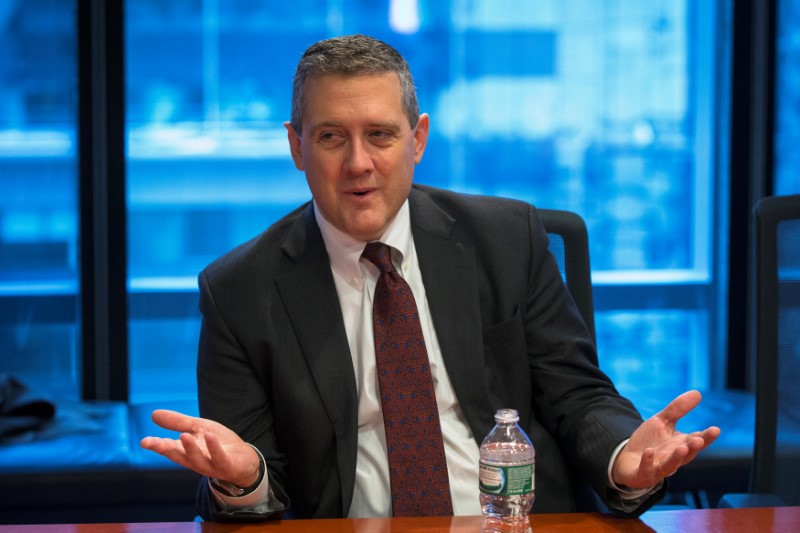NASHVILLE, Tenn (Reuters) - The Federal Reserve should wait on any further rate increases until it is clear inflation is reliably heading to the Fed's 2 percent target, St. Louis Fed President James Bullard said on Friday, highlighting the central bank's struggle over how to weigh a recent slip in the rate of price increases.
Growth also remains stuck at 2 percent, and it remains unlikely that the economic proposals of the Trump administration will raise that anytime soon, said Bullard. Even policy proposals that survive Congress and have the potential to raise growth won't have an impact perhaps until 2019, he said.
"They are talking about tax reform and talking about deregulation and these are good things to be working on," said Bullard. "The earliest you would have meaningful impact is the second half of 2018 or into 2019."
That would be a blow to Trump's pledge to raise U.S. growth to 3 percent, and would leave the Fed setting policy based on the tepid 2 percent growth that has characterized the recovery.
Though the Fed has embarked on what officials see as a slow but steady march toward higher interest rates, recent weak inflation data has raised some doubts about the wisdom of further increases. The Fed has fallen short of its 2 percent inflation target for several years.
As it stands, the central bank is not expected to move again on rates until December, while in the meantime taking the first gradual steps to reduce the size of its asset holdings - a policy shift that could push some longer-term interest rates higher.
It is a "distinct possibility" that process could kick off at the Fed's September meeting, Bullard said.
The weak inflation readings, coupled with the possible change in the balance sheet policy, provide all the more reason for the Fed to wait on any further policy changes.
"Recent inflation data have surprised to the downside and call into question the idea that U.S. inflation is reliably returning toward target," Bullard said at an Illinois Bankers Association conference. "The Fed can wait and see how the economy develops before making any further adjustments."
The Fed raised rates at its meeting last week with only one dissenting vote. But the policy statement flagged concern over a recent fall in the Fed's preferred measure of inflation to 1.5 percent, and Fed officials since then have split between those worried the trend may persist and those who feel the Fed needs to tighten still-loose monetary policy as a precaution.
Even though a low unemployment rate of 4.3 percent would, in theory, lead to higher inflation and provide a reason for raising rates now, Bullard said there is little evidence that is going to happen anytime soon.
Is U.S. inflation "about to increase substantially? The short answer is no, based on current estimates of the relationship between unemployment and inflation," he said.
